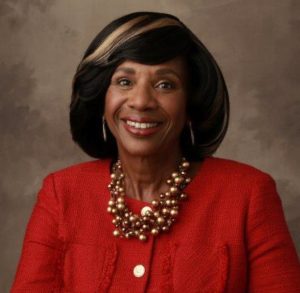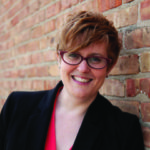On April 14, two African American men were arrested and removed by police from a Philadelphia Starbucks, after an employee called to report that the men had been asked to leave and refused. According to widely circulated social-media reports, which drew sharp rebuke and protests, the men were waiting for a third man, and were asked to leave because they hadn’t ordered anything.
The incident, for which Starbucks apologized, represents “a teachable moment,” Starbucks Chief Operating Officer Rosalind Brewer told NPR . “It’s time for us to — myself included — just take personal responsibility here and do the best that we can. For instance, unconscious-bias training is critical and at the top of our list …. We’ll have to move forward from this and learn from it.” On Tuesday, Starbucks announced that on May 29, it would close more than 8,000 stores in the U.S. to conduct “racial-bias training” for nearly 175,000 employees.

Editor in Chief Michelle Russell recently interviewed Paulette Brown, a partner with law firm Locke Lord LLP, who in addition to years of experience in management labor and employment litigation, was likely the first chief diversity officer to be appointed at a law firm. Brown, the first woman of color president in the American Bar Association’s (ABA) history, remains co-chair of the her firm’s Diversity & Inclusion Committee, and conducts implicit-bias training around the country.
During her tenure at ABA, Brown contributed to a body of research on diversity and was instrumental in changing the association’s conference programming policy to mandate diversity on panels. Russell spoke with Brown to learn more about her drive to make the world a more inclusive place.
Tell us about your work or your training on implicit bias and how this became a passion of yours.
Back in 2006 I helped to coauthor a report, “Visible Invisibility: Women of Color in Law Firms,” and before that I accidentally found myself on the [ABA’s] Commission of Women in the Profession. The incoming [ABA] president had asked me if I would do him a favor and I didn’t even ask him what it was — I just said yes. And until the last day of the ABA annual meeting, I did not know what the favor was. The favor was to be on the Commission of Women. He was a friend and the incoming president of ABA. How do you say no?
So the Commission had started working on this women of color study and I have to tell you there are some very courageous women who started it. I was fortunate enough to help finish it up and got a lot of credit for it, but a lot of the groundwork was done before I got there. One of the things that it talked about was the experiences of women of color in law firms and how differently they were treated from other people. There had to be reason.
Then I started learning more about the implicit association tests [IATs] and I started taking them. I learned quite a bit about myself. The then co-managing partner of my firm attended a presentation I gave to the Boston Law Group on the Visible Invisibility report. His eyes were opened to possibilities he had not considered.
He went back to the firm and consulted with other leaders there, and they thought it was so important to talk more about it. As a result of these conversations, I probably became the first chief diversity officer of any law firm. It was in that role that I started digging deeper into implicit bias. I started taking some of the IATs and realized some things about myself that I didn’t know.
That IAT is one tool, but not the only tool that helps us get an understanding of what our unconscious is telling us to do without us realizing it. It’s the same thing that makes us eat. It is the same thing as driving to work without remembering how you got there. It’s just our unconscious going ahead and telling us what to do without us realizing.
It became a very interesting subject. You don’t want to think that people are really bad people. You don’t want people to think the truth is that they’re racist, but you want them to understand that there are certain things that are causing them to do things that are not necessarily fair.
I’ve read that we have a kind of “mental residue,” because from an evolutionary point of view, humans have had to make snap judgments in order to be safe.
Right. Not only are we programmed but we are constantly programmed to think certain ways — through the media, even when we’re standing at the checkout counter at the grocery store, there are all sorts of images always being projected to us tell us what to think about certain things. So I always warn people before they take the test.
Once the test is presented in that context, are people more accepting of their biases?
A lot of the time, when people take the test and they get a certain result, they think they’re bad people. The results don’t tell me I’m a bad person. It’s merely providing information of how you respond to things, how you put two things together instantaneously or almost instantaneously, what you think should go together. So I try to explain to them before they take it — I think that explanation is needed before you take the test — that you should not be upset if you get a result that you did not anticipate because it happens to so many people.
And I understand that we unconsciously pay more attention to those stories that reinforce our own stereotypes.
Right, exactly. Sometimes people will have certain biases and then they will create a circumstance to make certain that that bias is confirmed.
Thinking about the world of conferences and business events, what role do you think they have in helping to further an awareness of implicit bias? Do you think there should be separate tracks or sessions devoted to this no matter what the industry or profession?
Okay, there are other ways to accomplish this. Something that I implemented when I was president of the ABA was a change in government procedure. So that now, if you want to obtain CLE credits for any program you sponsor or cosponsor, if there are at least four people on the panel including the moderator, one of them must be diverse — at least one of them. Diversity means a woman, a person of color, a member of an LGBT group, someone with a disability.
It does not necessarily mean “all of the above.” Now I’ve gotten criticism on both sides. Some people say you’re just loading up our programs with all white women and that satisfies the requirement; whereas, other people have said that you want us to lower the standards or you want us to “out” an LGBT person. I’m like, you don’t out them. You don’t know that they even exist unless they out themselves to you. They self-identify.
Learn more about unconscious bias on the Teaching Tolerance website at tolerance.org/professional-development/test-yourself-for-hidden-bias.
Ascent is supported by Visit Seattle and the PCMA Education Foundation.




